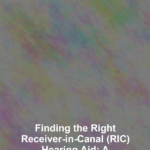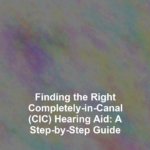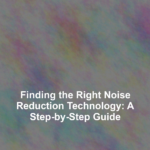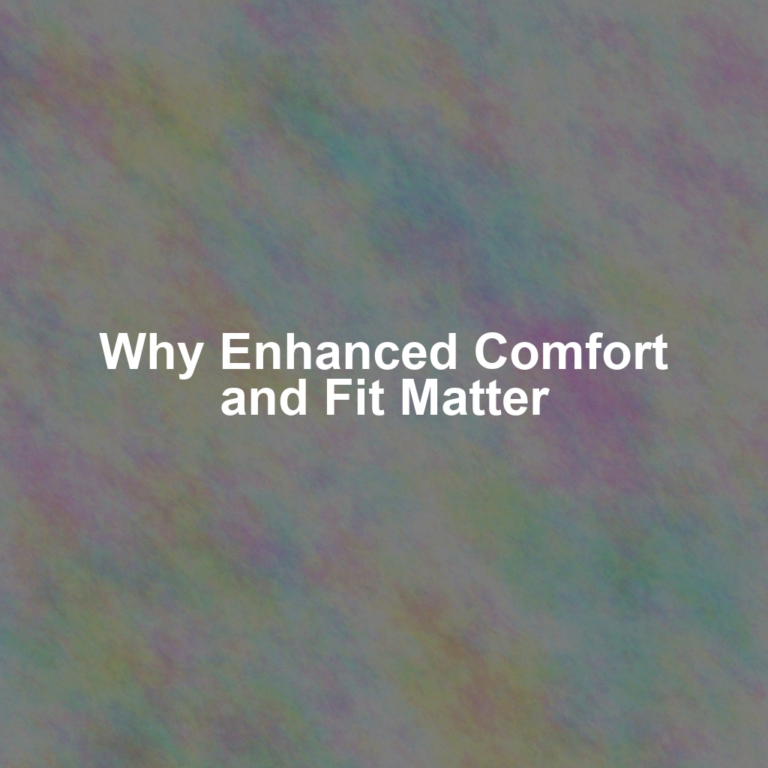Embarking on the journey to find the perfect hearing aid can feel like navigating a labyrinth, with twists and turns at every decision point. YouG??re not just choosing a device; youG??re selecting a companion that will play a pivotal role in your daily interactions and quality of life.
As you weigh your options, youG??ll need to balance your specific hearing needs with the vast array of features, styles, and technological advancements available. ItG??s essential to understand the nuances of each type and what they offer to your unique situation. Stick with me, and IG??ll guide you through this intricate process, ensuring that by the end, youG??ll be equipped to make an informed decision that resonates well with your lifestyle.
What you might not expect, however, is how this choice could open doors to a world where every conversation, note of music, and rustle of leaves is crystal clear. But how exactly do you thread the needle between necessity and the luxury of clear sound? LetG??s just say, the answer lies in the details that weG??ll unravel together.
Assess Your Hearing Needs
Before selecting a hearing aid, itG??s essential to evaluate the extent of your hearing loss and understand how it impacts your daily life. YouG??ll need to consider when and where you have the most difficulty hearing. Is it during conversations, in noisy environments, or when listening to the TV or music? Acknowledge the situations that cause you the most trouble, and make a list.
Next, you should seek a professional audiologistG??s assessment. TheyG??ll conduct tests to determine your hearing loss level and provide you with a detailed audiogram. This information is crucial because different types of hearing aids are better suited for various levels and patterns of hearing loss.
YouG??ll also want to think about your lifestyle and the activities you engage in. Are you often in large gatherings, or do you prefer smaller, more intimate settings? Do you need your hearing aid to be water-resistant for sports or outdoor activities? Answering these questions will help you identify the features you need.
Explore Hearing Aid Types
Having assessed your hearing needs, itG??s time to explore the different types of hearing aids that could best enhance your daily auditory experience. The most common styles include behind-the-ear (BTE), in-the-ear (ITE), in-the-canal (ITC), and completely-in-canal (CIC) devices.
BTE models sit comfortably behind your ear, connecting to an earpiece that channels sound into your ear canal. TheyG??re versatile and can accommodate various degrees of hearing loss. ITE aids are custom molded and fit snugly in the outer ear. TheyG??re easier to handle and can include additional features like volume controls.
For a more discreet option, consider ITC aids, which are partly visible in the outer ear but smaller than ITEs. CIC hearing aids are nearly invisible to others, as they fit completely within the ear canal. These are suitable if youG??re looking for something that wonG??t be easily noticed.
Each type has its own set of advantages, whether itG??s battery life, ease of use, or aesthetic appeal. YouG??ll want to weigh these benefits against your personal needs and lifestyle. Remember, itG??s not just about hearing betterG??itG??s about living better. With the right hearing aid, youG??ll be set to enjoy the sounds of life to the fullest.
Consider Technical Features
When selecting a hearing aid, itG??s crucial to consider the technical features that can significantly enhance functionality and suit your specific lifestyle needs. TodayG??s hearing aids come with a variety of sophisticated options youG??ll want to explore. For example, wireless connectivity allows you to sync your devices with smartphones, TVs, and other electronics for a more seamless listening experience.
YouG??ll also find directional microphones immensely helpful. They focus on the sound coming from the front, which is great in noisy environments as they reduce background noise. Another feature to look into is feedback suppression that helps eliminate the annoying whistling sounds often associated with hearing aid use.
Consider devices with tinnitus masking features if youG??re dealing with ringing in your ears. This can provide you with a measure of relief by generating a competing sound to distract you from tinnitus. Also, look for hearing aids with different listening programs. These programs can be switched depending on the sound environment youG??re in, whether itG??s a quiet room or a bustling street.
Lastly, donG??t overlook battery life. Rechargeable batteries offer convenience, but disposable batteries might suit you better if youG??re often on the go. ItG??s all about what works best for you.
Compare Brands and Prices
As you weigh your options, comparing brands and prices of hearing aids is a crucial step to ensure you get the best value for your investment. With a range of manufacturers each touting unique features and benefits, itG??s essential to delve into what sets them apart.
-
Research Top Brands
-
Widex: Known for natural sound quality.
-
Phonak: Offers a wide range of models, including those for severe hearing loss.
-
Resound: Innovative with smart device connectivity.
-
Oticon: Focuses on speech understanding technology.
-
Starkey: Pioneers in health-tracking features within hearing aids.
-
Entry-level devices: May start as low as $1,000 but lack advanced features.
-
Mid-range models: Typically between $2,000 to $3,500, balancing cost and functionality.
-
Premium hearing aids: Can exceed $4,000, offering cutting-edge technology and customization.
Schedule a Fitting Appointment
Once youG??ve decided on a hearing aid, itG??s crucial to schedule a fitting appointment to ensure optimal comfort and functionality. This step is where your device is tailored to fit your ears and hearing needs precisely. DonG??t skip it, thinking youG??ll adjust on your own; proper fitting makes a world of difference.
Call the audiologist or hearing aid provider and request a fitting session. TheyG??ll likely ask about your availability and may offer you a few options. Choose a time thatG??s not rushed, so you can fully engage with the process without stress.
At the fitting, youG??ll be tested with the hearing aid in place to fine-tune its settings. Speak up about any discomfort or if the sound doesnG??t feel quite right. Remember, this is your time to ensure everything works as it should.
Lastly, ask for a walkthrough of the hearing aidG??s features and maintenance. YouG??ll want to leave knowing how to operate your device and take care of it to ensure it lasts. If the clinic offers a follow-up appointment, book it. ItG??s an opportunity to address any issues that may come up as you get used to your new hearing aid.
Conclusion
YouG??ve navigated the crucial steps to find the perfect hearing aid. From assessing your needs to exploring types and features, youG??ve done the heavy lifting. Now, compare brands and prices to get the best deal.
DonG??t forget, itG??s vital to schedule a fitting to ensure your choice feels right. With this guide, youG??re set to enhance your hearing and improve your quality of life.
Embrace the change G?? a world of clearer sounds awaits you!










